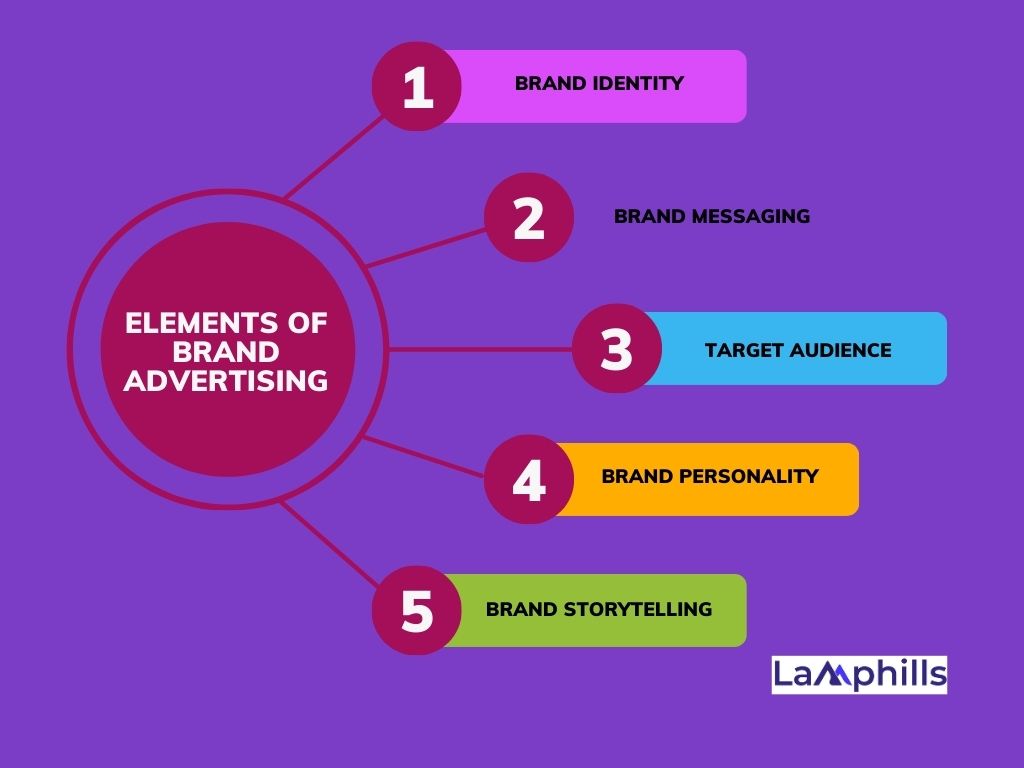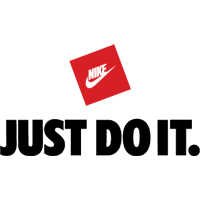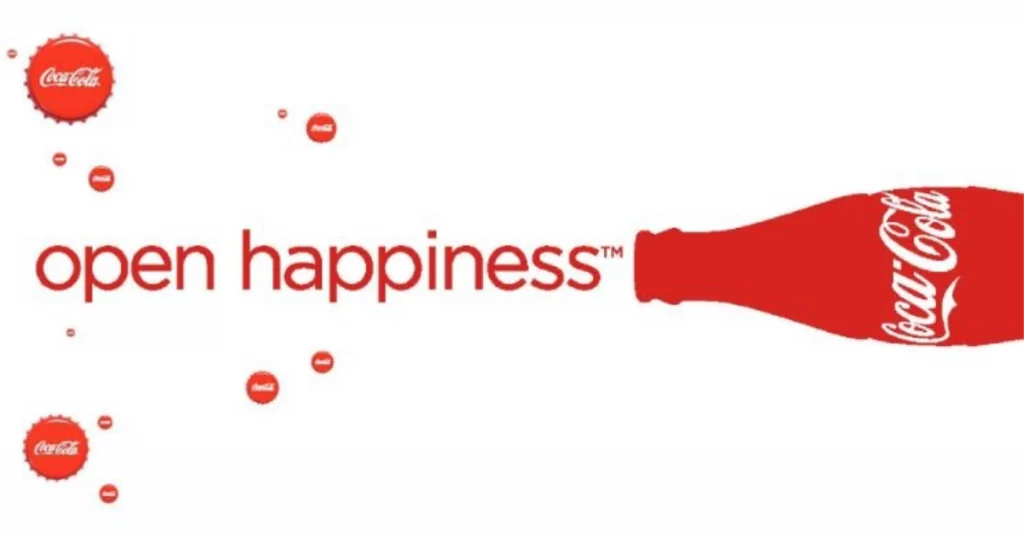No matter how great your product or service might be, it’s useless if the target consumers are unaware of it. Your brand must have a unique connection with your target customers to yield the desired results, and one of the ways to achieve this is through brand advertising. Read on to learn more on how to drive sales through brand advertising.
Key Takeaways
- Brand advertising, also known as brand marketing or promotion, is a strategic marketing method that aims to promote and strengthen a brand’s identity, image, and perception.
- Brand advertising channels include TV advertising, digital advertising, print advertising, outdoor advertising, radio advertising, event sponsorship, influencer marketing, content marketing, etc.
What is brand advertising?
Brand advertising is a strategic marketing method that aims to promote and strengthen a brand’s identity, image, and perception. It is also referred to as brand marketing or brand promotion. In contrast to direct response advertising, which strives for quick sales, brand advertising seeks to establish a long-lasting, powerful, and positive association between a brand and its target market. The primary aim of brand advertising is to get people to believe in something. As long as people believe taking Coca-Cola brings happiness, they’ll continue patronizing the brand. With brand advertising, you can build customer loyalty and increase your customer base.
How Does Brand Advertising Add Value to a Brand?

The sole aim of brand advertising is to attract and maintain customers. Once this is achieved, the customers’ perception of the brand improves. Brand advertising is more than getting customers, though. This guy called brand loyalty helps build the connection between the brand and the customer. Let’s look at the core components of brand advertising that help to foster this brand loyalty:
Core Components of Brand Advertising

To successfully run brand advertising campaigns, you should be aware of these components:
#1. Brand Identity
This includes elements such as the brand’s name, logo, tagline, colours, and overall visual identity.
#2. Brand Messaging
This refers to the language and tone used to communicate the brand’s values, mission, and unique selling proposition (USP). Clear and compelling messaging helps to differentiate your brand from competitors and resonate with your target audience.
#3. Target Audience
Identifying and understanding the target audience is fundamental for effective brand advertising. By studying their demographics, including their preferences, behaviors, and pain points, you can tailor your messaging and choose the most suitable channel for reaching them.
#4. Brand Personality
Every brand has a distinct personality that influences how consumers perceive it. Whether playful, sophisticated, or eco-conscious, aligning brand advertising with your brand’s personality helps establish emotional connections with consumers.
#5. Brand Storytelling
Storytelling is a powerful tool in brand advertising that engages audiences emotionally. Compelling brand stories that resonate with consumers’ values and experiences can leave a lasting impression and foster brand loyalty.
Types of Brand Advertising Channels

Different brand advertising channels are available, depending on the target audience. While I’ll personally recommend digital marketing, you can find these other types of brand advertising channels useful:
#1. Television Advertising
Television advertising is among the most common types of advertising channels. With TV commercials, you can reach a broad audience and pass your message through sight, sound, and motion. They are particularly effective for building brand awareness and reaching mass-market audiences.
#2. Digital Advertising
Digital advertising encompasses various online channels, including display ads, social media ads, search engine marketing (SEM), and email marketing. This form of advertising offers precise targeting options, real-time analytics, and the ability to personalize messages based on user behavior.
#3. Print Advertising
Print advertising includes advertisements in newspapers, magazines, brochures, and other printed materials. While print advertising has declined in recent years, it can still be effective for reaching certain demographics and niche markets.
#4. Outdoor Advertising
Outdoor advertising, such as billboards, transit ads, and posters, allows brands to reach consumers in high-traffic areas. These ads provide visibility and exposure to a wide audience and can be particularly effective for local businesses.
#5. Radio Advertising
Radio ads deliver brand messages through audio broadcasts, often targeting specific demographics or geographic regions. They are effective for building brand awareness and driving local or regional promotions.
#6. Event Sponsorship
Brands can sponsor events, festivals, conferences, and sports tournaments to increase their visibility and association with specific activities or causes. Event sponsorship provides you with opportunities for experiential marketing and engaging directly with target audiences.
#7. Influencer Marketing
Influencer marketing involves partnering with social media influencers or content creators to promote your products or services to their followers. It leverages the influencer’s credibility and reach to authentically endorse the brand and generate awareness.
#8. Content Marketing
Content marketing focuses on creating valuable and relevant content, such as blog posts, videos, and infographics, to attract and engage target audiences. You can build trust and authority for your brand within your industry by providing useful information or entertainment.
Benefits Of Brand Advertising
Brand advertising could benefit your brand in many ways:
#1. Wider customer reach
You can reach a wide range of customers using different brand advertising channels like TV and social media. The more they see your brand on different channels, the more familiar they get with your products, boosting their confidence to buy. If they like your products, they’ll refer your brand to others, improving brand visibility. That is how brand loyalty is built.
#2. Build relationships with customers

Brand advertising helps you build a lasting relationship with your customers since it helps you connect with their emotions and intellect. Technology has even made it easy to market a product’s functional value to its emotional value using slogans and buzzwords.
#3. Competitive advantage
With brand advertising, you can get ahead of your competitors, especially when launching a new product. Through advertising, your customers perceive your products a unique, thus improving brand loyalty.
#4. Attracts Talent
People will easily notice when your business has effective branding. And by people, I mean influencers, social media marketers, and content creators. This set of people will help promote your brand and increase its visibility. This enables you to reach an even larger audience because people trust the recommendations of their favorite influencers and content creators.
Implementing an Effective Brand Advertising Strategy
You have understood brand advertising and what it can do for your brand. How do you then do brand advertising the right way?
#1. Identify your target audience
If you pay attention to customer reviews, you’ll find that most customers are more inclined to businesses that understand and address their needs better. So, before you map out your advertising strategy, take the time to identify and study your target customers and find out what they need. Remember, the business isn’t about you; it’s about the customers. You’ll waste a fortune trying to sell to the wrong audience.
Conduct thorough market research to uncover user personas, demographics, and insights into what motivates your customers. Knowing who you’re targeting will help you tailor your brand messaging and tone of voice to reach new customers better while engaging current ones.
#2. Establish a unique position in the market.
A recent study showed consumers would not care if 77% of 1800 brands disappeared. You do not want your business to be part of that statistic. Establish and include a unique market position in your brand marketing strategy to stand out in a crowded marketplace. This involves defining how your target market perceives your product or service compared to how they perceive your competitors.
#3. Tell a compelling story
For your brand advertising strategy to be effective, create a message that resonates with your target audience. Your brand story should capture your personality and mission statement and build an emotional connection between your customers and your product. As I said earlier, the focus is on your customers, so your story should focus on how your brand can solve their problems and improve their lives.
#4. Develop an engaging visual identity.
Create a strong visual identity to expand your overall brand recognition. Incorporate consistent elements like your logo, specific typography, and color themes that reflect your brand identity. Your visual identity should also reflect your brand’s positioning statement.
#5. Leverage technology
Technology has made marketing and advertising easy by driving leads and sales through various channels. You can manage social media accounts, launch marketing campaigns, build websites, and design graphics. You can create brand awareness on social media by creating content for specific platforms like Instagram or Twitter and incorporating hashtags for increased engagement.
#6. Analyze and refine your strategy regularly.
Creating a brand advertising strategy is an ongoing process that needs to be reviewed occasionally. Analyze your audience’s response to your messaging, visuals, and technology every few months to see what works and doesn’t. Watch out for loopholes, and if something isn’t resonating with your target audience, try changing it or testing different approaches until you succeed.
You should also regularly monitor how your competitors position themselves and adjust your strategy accordingly. Consistently studying the market can help you develop a strong, differentiated brand identity that stands out.
Establish clear objectives and key performance indicators (KPIs) to ensure your branding efforts remain effective and successful. Review your progress regularly to ensure you meet those KPIs and adjust your strategy as needed. If you’re not meeting your goals, consider changing or updating strategies, such as revising messaging, enhancing visual elements, or exploring new technologies that provide a better customer experience.
Here’s a detailed checklist for your reference:
Major KPIs to Measure the Success of Your Brand Advertising Campaigns
There are many KPIs you can use to measure your brand advertising success. However, you must understand and choose the KPIs most relevant to your campaign’s goals. Here are some KPIs you can use to measure your brand advertising success.
#1. Sentiment Analysis
Sentiment tells you what people know and how they feel about your brand. You can measure this in terms of opinions about your brand or what customers say about you online. With this KPI, you can adjust your marketing efforts and specific product messaging to better suit your campaign goal.
#2. Social mentions
Social mentions refer to the frequency with which your brand is mentioned and what it says about you. You can visit channels where your customers are dense and observe what they say about you. By reading between the lines, you might be able to unwrap important insights about your brand in customers’ eyes. What do these mentions say about the role of your brand in customers’ lives? Note also that seeing no brand mentions is equally important feedback.
#3. Brand recall
The sole aim of brand advertising is for your brand to be at the top of your customer’s minds. Brand recall tells you whether or not customers remember your brand among the competition—and in what order they remember. Imagine asking a customer what they think of when you say “carbonated soft drink.” The likely answer you’ll get is Coca-Cola.
You can measure brand recall with surveys or focus group discussions. It’s best if you don’t plaster your brand name or brand elements all over the study to ensure there has been no prior conditioning that may alter results.
#4. Return on Ad Spend (ROAS)
ROAS is a metric that overviews the revenue earned for every dollar spent on ads. It equals the revenue attributed to ads divided by the cost of those same ads.
#5. Customer Lifetime Value (CLV)
This metric helps understand the long-term impact of brand advertising on customer retention and loyalty. Here’s an example to help explain this: If a customer pays $1,000 a year to subscribe to your company’s service and is expected to remain a subscriber for four years, the CLV of that customer is $4,000. This CLV is very important, as acquiring new customers costs more than retaining existing ones.
#6. Conversion Rate
The conversion rate measures the number of website visitors converted into leads or customers during a campaign. If a marketing campaign generates 1,000 new website visitors and 100 of those visitors are subsequently qualified as leads because they completed a specific target action, that results in a 10% conversion rate.
#7. Cost Per Acquisition (CPA)
CPA is the total cost your business spends to gain one new customer. With CPA, you measure how much it costs to get a customer from the initial outreach phase to a conversion.
#8. Impressions
Impressions are the number of times people see your ad. The higher the number of impressions, the more people view your ad, which means your brand advertising strategy is effective.
#9. Social Media Engagement
This metric generally relates to how your customers and target audience interact with your social content through comments, likes, shares, and reposts. You can typically track engagement metrics on social media networks’ analytics dashboards.
#10. Click-Through Rate (CTR)
This metric measures the percentage of customers who click on your ad after seeing it.
#11. Net Promoter Score (NPS)
This metric tells you how willing a customer is to refer or promote your brand to others. A recent study showed that 49% of customers are willing to share their positive brand experiences on social media, so NPS can gauge your overall brand health.
You can measure NPS by surveying current customers and how likely they are to recommend your brand. Respondents who answer 9-10 are called promoters, 7-8 passives, and 0-6 detractors. Subtract the percentage of your detractors from the percentage of promoters, and you have your NPS.
Examples Of Successful Brand Advertising Campaigns
#1. Nike – Just Do It

Nike has created an image people will recognize and associate with its brand.
Starting in 1988, the Nike “Just Do It” commercial featured professional and amateur athletes explaining their accomplishments and the emotions they feel when exercising. One of the campaign’s television spots featured an 80-year-old marathoner called Walt Stack, telling how he runs 17 miles every morning. This made viewers go, “If these athletes can accomplish it, why can’t I?” Consequently, people began interacting with Nike with personal stories about how they “just did it,” whether quitting a job they didn’t like or building a new healthy lifestyle. These turn of events have helped establish Nike as a trustworthy brand.
#2. Coca-Cola – Open Happiness

Coca-Cola is one of the few non-alcoholic beverage brands that has survived since its inception. The brand name is so popular that it has been associated with the product. Hence, we just ask for cola even if we meant something else.
With the simple “Open Happiness” tagline, Coca-Cola started an interesting and original marketing campaign in 2009. It became one of the most well-known examples of brand advertising and communications in recent history, and it aided the brand’s enormous success by engaging people worldwide. The campaign encouraged people to find happiness in life’s small things and spread joy and happiness through Coca-Cola. This strategy has worked for ages because you’ll likely see Coca-Cola shared at almost every event.
#3. Adidas

Adidas is another brand with creative advertising and a distinctive, easily recognizable logo. To increase trust in the company, Adidas produced a video taking viewers on a tour of its factory and showing the process of making shoes. This allowed consumers to view Adidas as an open and honest company.
#4. Apple

Apple uses a more minimalistic approach to advertising that matches the design of its devices. You can easily identify an Apple product anywhere with just the logo.
What Is Brand Purpose In Advertising?
Brand purpose in advertising is the underlying reason for a brand’s existence beyond making a profit. It reflects the brand’s commitment to positively impacting society and resonating with consumers’ values and beliefs.
What Is The Difference Between Brand and Performance Advertising?
Brand advertising focuses on building brand awareness and perception, while performance advertising aims for immediate action and measurable results like clicks or conversions.
In Conclusion
Brand advertising is an integral part of any marketing strategy. Compared to direct response ads, it has a long-term effect on your brand. And when executed perfectly, the benefits can be tremendous. By combining brand advertising with direct response, your brand can capture immediate ROAS and drive future sales. You can position your brand for more profitable returns with the suggestions and examples I have outlined above.






